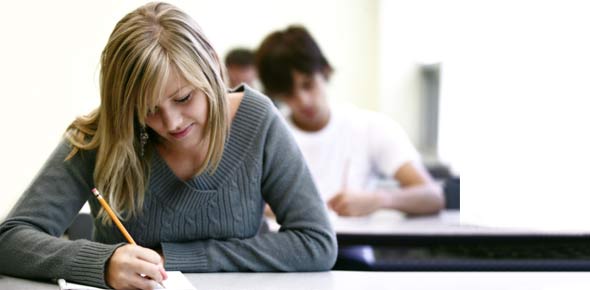The best thing a massage therapist can do to prevent the spread of...
What is a synonym for malpractice insurance?
When a person is in a horizontal position while lying face downward,...
What term best describes touching with purpose and intent?
What is the name for external application of heat for therapeutic...
A very precise and penetrating form of friction, popularized by Dr....
A biological agent capable of causing disease is
Which of the following best describes a state of exhaustion or a loss...
What would be the best self-care treatment plan for a client with...
What is the term used to describe a cancerous tumor?
Which of the following best describes what may not be felt until 8 to...
The application of cycles of rhythmic lifting, squeezing, and...
What is a general term for acute or chronic skin inflammation...
Considered a light effleurage, this massage stroke is feather-light...
Which of the following best describes petrissage?
If a client is lying horizontally on his or her back, in what position...
The spreading of cancerous cells to other parts of the body is called
Repetitive staccato striking movements of the hands, moving either...
Recumbent position preferred for pregnancy, for some elderly people,...
Active movements performed by the client while the therapist assist...
A client has a sprain of the calcaneofibular ligament. It is a...
Movements applied by the therapist while the client remains relaxed...
Relative to the mover force, what is the resistance force?
What is an injury that begins abruptly, usually has a recognizable...
Injuries related to inefficient biomechanics; a constant motion,...
Rapid shaking, quivering, trembling, or rocking movements applied with...
The term used to refer to someone who is 70 years of age or older is
A ductless gland that secretes hormones directly into the bloodstream...
What is the concept of energy called in India?
The sensual bond to another that involves choice, mutuality,...
Which of the following Japanese bodywork therapies uses pressure on...
Which of the following is NOT a guideline for proper body mechanics?
What is a synonym for a business license?
Blood pressure generally decreases during massage because
What type of muscle contraction is usually involved with...
Which receptors are often called the "cold receptors"?
Unintentional physical or emotional harm sustained by the client...
What is the principal neurotransmitter involved in muscle contraction?
In what order are the following sensations felt by most clients during...
If a therapist has broken skin on the fingers, hands, forearms, or...
A disease that has a specific beginning, signs, and symptoms that...
Origin: infraspinous fossa of the scapula...
Origin: infraglenoid tubercle of the scapula, posterior proximal...
Which of the following is indicated for massage?
Origins: linea aspera (lateral lip), gluteal tuberosity...
Which one of the following is true?
What is the term used to describe the section of intestinal wall that...
What direction is the direction in which pressure should be applied...
Origins: ribs 1-9 (lateral to costal cartilage)...
If a person lifts his or her arm into the air and this motion occurs...
For the distal attachment of a muscle to move more efficiently, the...
One of the principles of massage especially for relaxation is focused...
A list of guiding principles by which members of an organization...
Which of the following is true?
What is one of the most potent techniques in hydrotherapy?
Pyloric sphincter allows transport of what substance?
Who is the Dutch physician who promoted Swedish massage using the...
If a more intimate relationship is desired by the therapist and...
In which of these joints is movement absent or extremely limited?
What is the concept of energy called in Japanese?
What principle describes the fact that the pectoralis major can adduct...
If a physician refers a client to a massage therapist, the therapist...
What is the most common scenario involving conflicts of interests in a...
Which of the following is NOT indicated for massage?
Origin: medial epicondyle of the humerus...
Who is regarded as the Father of Hydrotherapy?
During massage application, while kneading the tissue, the massage...
A Turkish shampoo concludes with which of the following?
According to Dr. David Simons, what percentage of trigger points refer...
What is a synonym for premise liability?
When a client's physical body "remembers" a past...
Which of the following chakras corresponds to the element of water?
What term is used to describe a quality of energy in a tsubo that...
During massage, respiration is affected how and by what mechanism?
General full-body massage has been shown to stimulate vagal function....
Which of the following is a skin-scraping technique to help expel...
Origin: temporal fossa...
According to traditional Ayurveda, what is a word that means...
Which of the following is a trigger point that is located at...
Origin: distal anterior humeral shaft...
What type of glove material is recommended for use with oil-based...
Postural stabilization muscles tend to be
The ancient "center of gravity" located an inch or two below...
Which of the following defines a business' accounts payable,...
Which of the following are two variations used in the contrast method?
By which week in pregnant women can the hormone production of relaxin...
What is a reflexive impulse that causes the affected muscle or...
According to Ayurveda, what is the term used to denote a person's...
Which of the three doshas is made up of the elements fire and water?
What is the result of a Golgi tendon organ reflex?
A flexible tube that is inserted and sewn into a large vein (usually...
Which of the following actions does a functional group of muscles...
Which of the following actions does a functional group of muscles...
Which of the following is locally indicated for massage?
What is the reverse action when the brachialis contracts and shortens?
What is the structural classification of the proximal radioulnar...
The flexor digitorum superficialis contracts and flexion of the...
Origin: inferior border of the rib (above)...
Which type of cancer arises from epithelial tissue?
How are fixators and neutralizers similar?
















